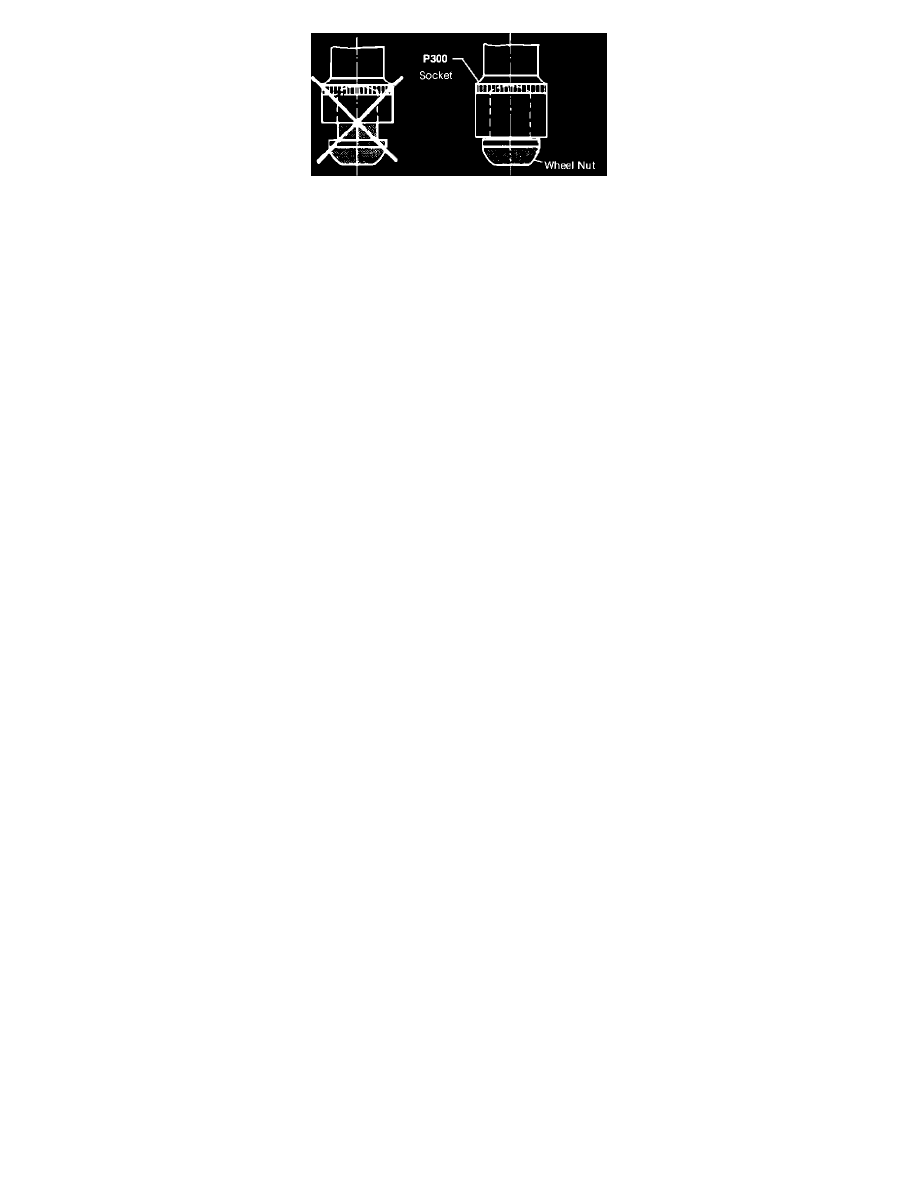911 Carrera Coupe F6-3164cc 3.2L (1984)

Aluminum Wheel Nuts
Aluminum wheel nuts require special care.
Before installing:
-
lubricate threads and shoulders of aluminum nuts with Optimoly TA, Part No. 000 043 020 00. (Optimoly TA does not affect tightening torque.)
Torque nuts to 130 N-m (96 ft.lbs.)
Note:
Tighten and loosen aluminum nuts with a socket that grabs the entire depth of nut such as Porsche tool No. P300.
CAUTION Other socket wrenches or wheel wrenches are not approved. Never use impact tools.
Break-in time for new tires.
New tires have a vulcanization skin that can cause poor vehicle handling. Handling characteristics improve measurably during the tire break-in period of
300 miles (500 km). Vehicle handling characteristics should not be evaluated immediately after tire replacement.
Driving conservatively during the first 300 miles (500 km) will help to maximize tire life. After the break-in period, recheck wheel balance.
Conditions leading to slow air loss or structural damage
^
damage to bead during installation
^
installation damage from excessive expansion of bead core; tire could part from rim
^
installation damage to inside of tire; could cause loss of air or ply separation
^
punctures from foreign objects (nails, glass, rocks, etc.); moisture can cause rust at puncture
^
squeezing damage (from driving over potholes, curbs, or similar objects)
^
sidewall damage (from rubbing against curb or slipping off road shoulders)
^
cuts in tire (especially sidewalls)
^
damage from underinflation
CAUTION:
Porsche recommends replacing a tire if there is damage to the tread or sidewall and any possibility of structural deterioration.
Note:
Repairing tires with pressurized sealants or tubes is not acceptable.
Retreading tires is not acceptable.
Damage that impairs true-running of wheels
^
Flat spots from standing under high temperature conditions. Tires may develop flat spots on the contact surface during long periods of standing.
Driving the car should correct this condition.
^
Uneven wear from damaged suspension parts or misalignment. Checking/ correcting wheel alignment is necessary along with the replacing of
damaged parts.
^
Uneven wear from improper balancing. Correct balancing must be performed before damage occurs.
^
Flat spots from locked wheels while braking. This damage usually remains noticeable and cannot be repaired.
When checking tire pressure, also check condition of tires. Look for uneven tire wear, damage to tires and rims and damage to suspension parts.
